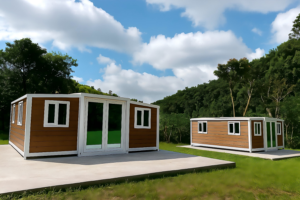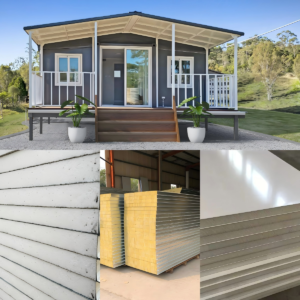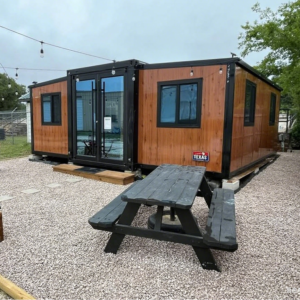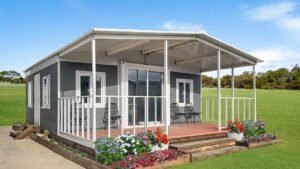Insulating a steel container home is essential for maintaining stable indoor temperatures, reducing energy consumption, and preventing condensation damage. Without proper thermal protection, metal walls absorb excessive heat in summer and lose warmth rapidly in winter, driving up HVAC costs and compromising occupant comfort. Choosing the right insulation strategy not only lowers operating expenses but also extends the building’s lifespan and improves indoor air quality. In this guide, we leverage UMD’s factory-built sandwich panel expertise to present proven insulation solutions that meet international performance standards.
Understanding the Thermal Challenges of Container Homes
Steel has very high thermal conductivity, meaning uninsulated container walls allow heat to pass through with ease, causing indoor temperatures to fluctuate dramatically. In hot summers, excessive solar gain can turn the interior into an oven; in cold winters, heat loss through the walls forces heating systems to run continuously. Thermal bridges at panel seams and structural connections create localized cold spots that attract moisture, leading to mold growth and metal corrosion over time. A successful insulation design must therefore address both overall heat transfer and these localized thermal bridges to ensure a uniform, high-performance building envelope.
Selecting the Right Insulation Material
UMD’s default choice is EPS (expanded polystyrene) sandwich panels, which offer excellent R-value per inch, a smooth factory-finished surface, and rapid on-site assembly. EPS resists moisture uptake and integrates seamlessly into prefabricated wall systems, minimizing field labor. For projects requiring enhanced fire resistance, rock wool panels can be specified; they are non-combustible but have slightly lower surface smoothness. Custom cores such as PU (polyurethane) and PIR (polyisocyanurate) deliver higher thermal resistance in thinner profiles—ideal for space-constrained designs. For niche or eco-certified builds, natural materials like sheep’s wool or cork are also available. By comparing R-values, cost per square meter, and lead times, you can balance performance, budget, and delivery schedule effectively.
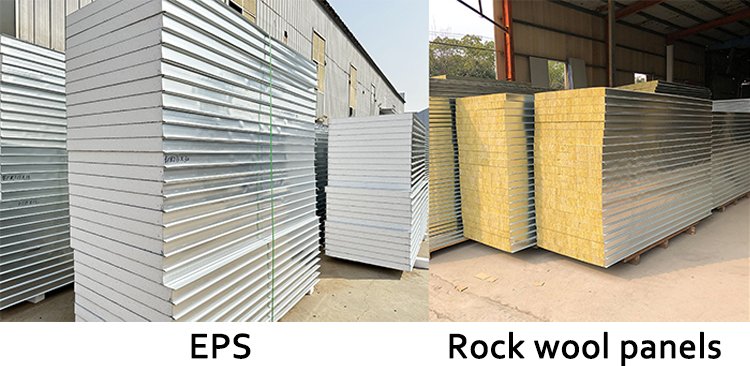
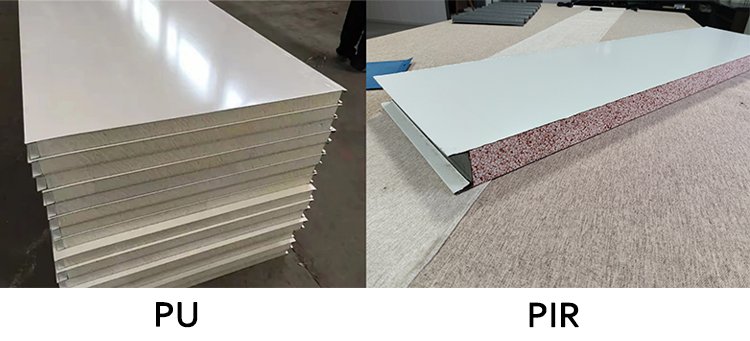
Factory-Prefabricated Wall Panel Insulation Process
UMD’s controlled factory process bonds the chosen core material between steel facings to form composite sandwich panels with consistent thickness and strength. Each panel undergoes automated lamination, precision edge sealing, and anti-corrosion coating to ensure long-term durability. An integrated vapor barrier prevents moisture ingress, while high-performance gaskets and sealants at joints eliminate air leaks and thermal bridges. Before shipment, panels are subjected to thermal imaging and airtightness testing to verify compliance with ISO performance criteria. This rigorous quality control removes the need for customers to install insulation on-site, significantly accelerating project timelines.
Complementary Strategies for Superior Performance
Beyond core wall insulation, applying high-reflectivity radiant barriers or low-emissivity roof coatings can deflect solar heat gain and stabilize interior temperatures. Specifying thermally broken window and door units helps maintain overall R-values by preventing conductive heat loss at openings. Comprehensive air sealing—using continuous gaskets, spray foam sealants, and weatherstripping—prevents drafts and moisture intrusion. Integrating balanced mechanical ventilation with heat recovery (MVHR) or dedicated dehumidification ensures healthy indoor air quality without compromising thermal efficiency. A holistic approach to the building envelope and HVAC coordination is essential for peak energy performance.
Common Pitfalls and Troubleshooting
In humid climates, improperly detailed vapor barriers can allow moisture to accumulate behind insulation, leading to mold growth or metal corrosion. Pay special attention to panel intersections and roof-wall junctions, where thermal bridging is most likely. Over time, sealants may shrink or degrade—regular inspections and resealing every few years will prolong the life of insulated panels. If occupants report uneven temperatures, infrared thermography can pinpoint problem areas for targeted remediation. Proactive maintenance and early detection of insulation failures are key to preserving comfort and energy savings.
Conclusion
Effective insulation transforms a bare steel container into a comfortable, year-round living or working space while cutting energy costs and protecting structural integrity. UMD’s factory-prefabricated EPS sandwich panels—and optional rock wool, PU, or PIR cores—provide verified thermal performance, moisture control, and streamlined installation. When combined with reflective roof coatings, high-performance fenestration, and airtight construction techniques, you can achieve a resilient, energy-efficient container home. Check out UMD’s Expandable Container Houses Contact UMD team to evaluate your climate needs and receive a tailored insulation solution for your project.


